【Museums Link Asia-Pacific】Creating Intercultural Dialogue Between Museum and Immigrant Communities – Multilingual Tour Service in National Taiwan Museum
New immigrant ambassador Hung Jung Hsi from Indonesia spoke her mother tongue to introduce the building and history of the National Taiwan Museum during Eid al-Fitr in 2015. (photo by Yuan Hsu-Wen)
Author: Yuan Hsu-Wen (Research Assistant, Education Department, National Taiwan Museum)
This review reflects on the initiative to provide multilingual guide service in National Taiwan Museum, as well ongoing education activities related to cultural diversity.
Since 2015, the museum has been recruiting immigrants and foreign spouses from Southeast Asian communities in Taiwan, where after a 10-hour training program, they can help provide introductions on both museum history and permanent exhibitions in their native language to audiences from Southeast Asian countries.
According to the statics of National Immigration Agency, Ministry of Education, and Ministry of Labor, by the end of June 2017, the number of foreign spouses/new immigrants and workers from Southeast Asian countries in Taiwan will exceed one million. They are here to provide support to the social development and population in Taiwan, take care of our elderly, undertake works that are often labeled 3D: Dirty, Dangerous and Difficult, and have brought Taiwan the various advantages of multi-cultural and multi-lingual influences among different ethnic groups. As such, National Taiwan Museum (NTM), the oldest museum in Taiwan, is trying to serve as a “bridge” to promote mutual understanding among different ethnic groups. Starting in June, 2015, National Taiwan Museum initiated the “New Immigrant Ambassadors” project and recruited 14 new immigrants. By the end of July 2017, there will be about 20 immigrants serving as museum guides and partners of NTM.
Keywords: multicultural tour service, new immigrants, migrant workers, museum
Acquiring new friends in Taiwan
National Taiwan Museum is located inside 228 Peace Memorial Park, which is a popular place for Southeast Asian migrant workers to hang out on weekends. However, for new immigrants, they find it embarrassing to walk into the museum due to their own identity and with the impression that the so-called national museum should be at the service of local Taiwan citizens and tourist from Japan, Europe and America. In fact, the countries in Southeast Asia have long developed their own culture, art, language and history. Every immigrant in Taiwan is an individual reflecting their home country heritage. As an educator and the “bridge” between different ethnics, the museum should recognize its importance to embrace cultural diversity. By encouraging people from all different cultural backgrounds to speak out, the museum can serve as the perfect field to achieve positive interactions between Taiwanese culture and other cultures around Southeast Asia.
I have worked in the National Taiwan Museum starting from the end of 2014, responsible for the project of “New Immigrant Ambassadors”. Till 2017, the museum was appointed by Ministry of Culture to hold the very first “National Cultural Congress- Forum on the Cultures of New Immigrants in Taiwan”. Obviously, by holding activities like seminars, training and cultural display etc. to keep a continuous and regular communication with minorities in the Taiwan society will be an essential basis to rapidly enhance positive interaction and then build up trust between different ethnic groups, which can also help us think about the role a museum should play in an immigrant society when the level of participation is higher. When joining the society in Taiwan, Southeast Asian immigrants are usually asked to fit in the mainstream society “immediately” under the situation of language barrier, which may cause them to be afraid of going out and also feel that people around them look down on them. Migrant workers are a common global phenomenon nowadays and people in Taiwan should be more open-minded to embrace those who “choose” to immigrate into Taiwan. Kivisto and Faist have mentioned that moving from a familiar environment into a whole new society tends to lead to great disorder on cultural experience on a daily life basis in their work “Beyond a Border: The Causes and Consequences of Contemporary Immigration, 2010”.
Take migrant workers in Taiwan as an example, the religion, language and culture are so different from migrant workers, which may cause anxiety and frustration due to misunderstanding. Bonding more intimately with Taiwan society by adapting and learning can be the solution to this issue. Vietnamese immigrant docent of this project who has come to Taiwan for more than ten years says that in the beginning, she will actively participate every kind of courses and events, which helped her merged more easily with Taiwan culture and society. Moreover, she expects to assist woman from Vietnam to adapt the culture and then can educate their children personally. But the process of fitting into the society hastily can lead to culture and language loss for immigrants. Some Southeast Asian immigrants mentioned that they were prohibited to use their own language when they came to Taiwan due to marriage in the early years, which lead to them hiding their own culture for so long that they start to forget how to use their own mother tongue. Recently, there are more and more transnational marriage on the basis of romantic love between Taiwan and Southeast Asia; therefore, the role of the museum in public affairs and service should tend to “represent the culture of the home country” and “expecting cultural interaction in public.” Moreover, while developing activities, we should understand the culture, language background, experiences referring to museum for every immigrate docent and make good use of their expertise to plan relative performances and produce the greatest result in return.
Communicate with ONE heart
It’s an essential issue of “cultural equality” to have new immigrants walk into the museum. Usually, the museum tour will end up with shallow understanding for new immigrants since there are no museum tours in their native languages. Hence, in 2014, National Taiwan Museum have started recruiting those immigrants who are active to participate as tour guides through training and have them use their language and profession to assist new immigrants to acquire the architecture and history of National Taiwan Museum. The Indonesian and Vietnamese ambassadors even speak their mother tongue to invite people to visit and meet freely in museum on Eid al-Fitr in July, 2015.
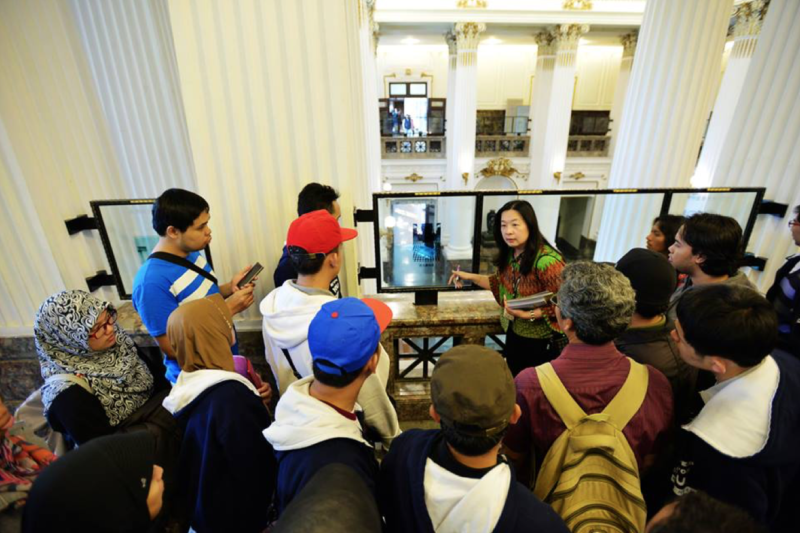
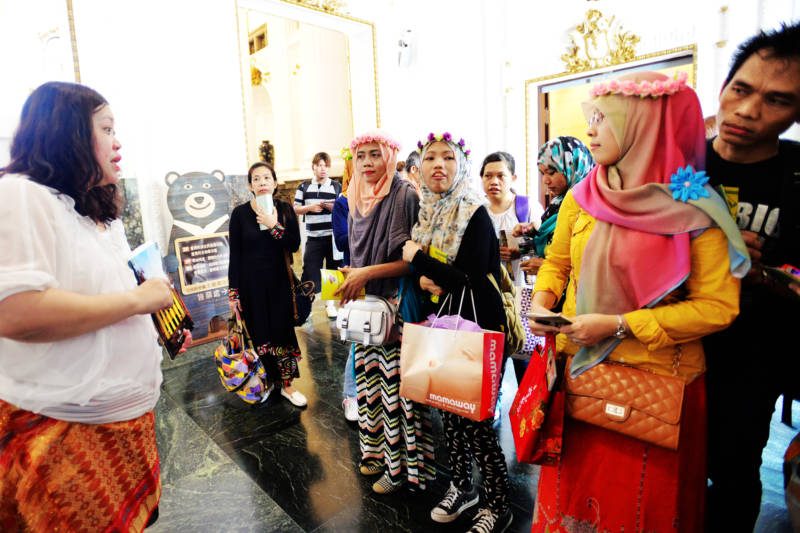
From 2014 till now, there are total 10 docents with 5 languages including Indonesian, Vietnamese languages, Thai, Tagalog and Burmese. I have observed and found out that there are three aspects: (1) “Assisting in Integration”- enhancing the knowledge of Taiwan culture and language themselves and meanwhile help their people to know Taiwan better. (2) “Being a Bridge”- find out the connection between Taiwan and their home countries and provide help for mutual understanding and communication as a bridge. (3) “Creating Value”- discovering self-potential by giving and receiving.
These three aspects proceed gradually and perhaps influence reciprocally. In a series of training courses, new immigrants can show their ability and build up their own unique and intercultural tour style through the mutual support between autonomy and emotion, as well as consecutive discussing, studying, observing and practicing.
New mission for the museum: crossover and building mutual trust
Crossover cooperation is the key point that the museum can bring multiculturalism into the guidance services. After the recruitment and training are ready, the museum also makes contact with nonprofit organizations (NPO) and student associations, inviting them to work together for experiential activities and a series of “Visiting the Backyard Garden of National Taiwan Museum” events, which are planned to assist with “New Immigrant Ambassadors” along with their own languages. Taiwan participants were concerned of the language barrier in the beginning; however, after being surrounded by cultural literacy activities and Southeast Asian gourmet, they can easily open their mind to communicate with Mandarin, English and Taiwanese Hokkien (many foreign caregivers can speak standard Hokkien). And for those having relative experiences are even happier to use Southeast Asian language to have “language exchanges” with immigrants.
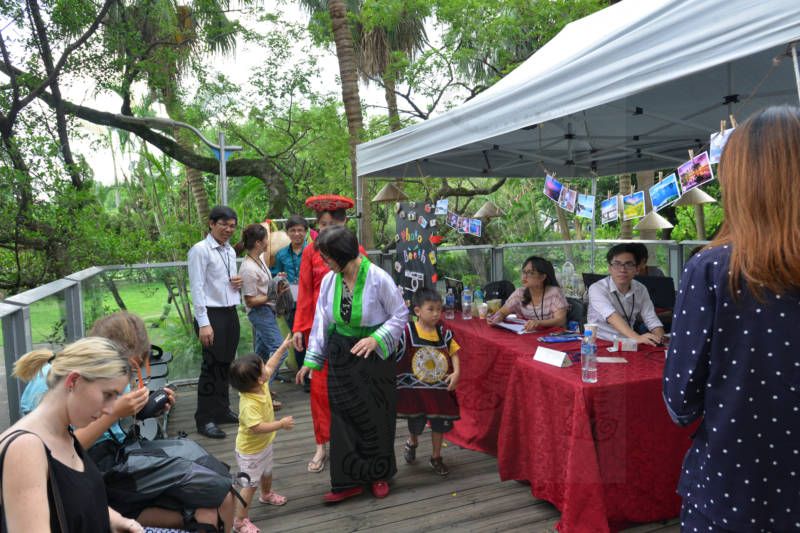
After all the effort National Taiwan Museum have put in for all of these years, the cooperation with universities has been taken over by the research assistant Fang, Hui-Shih from 2017. She recruited foreign students speaking English, Japanese, Korean, Spanish and Cantonese etc. to provide guidance service after well-trained and testing. For now, National Taiwan Museum will be “the place” for multicultural interaction on the weekends.
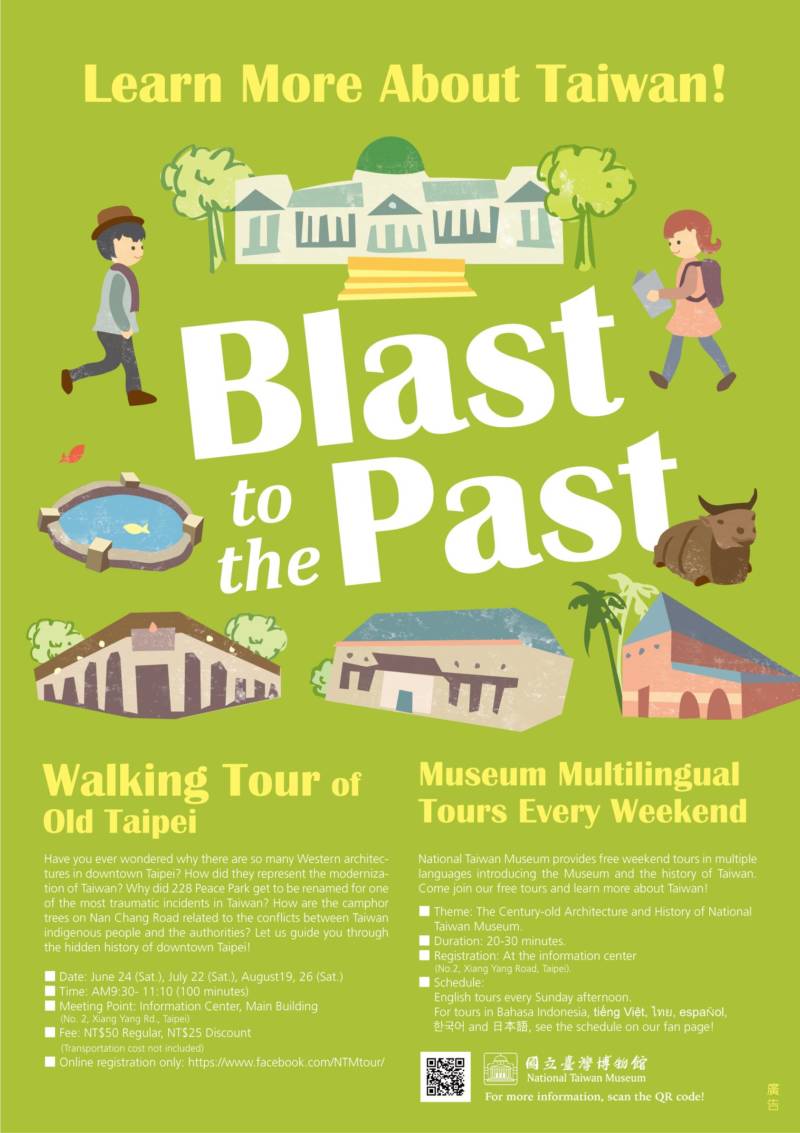
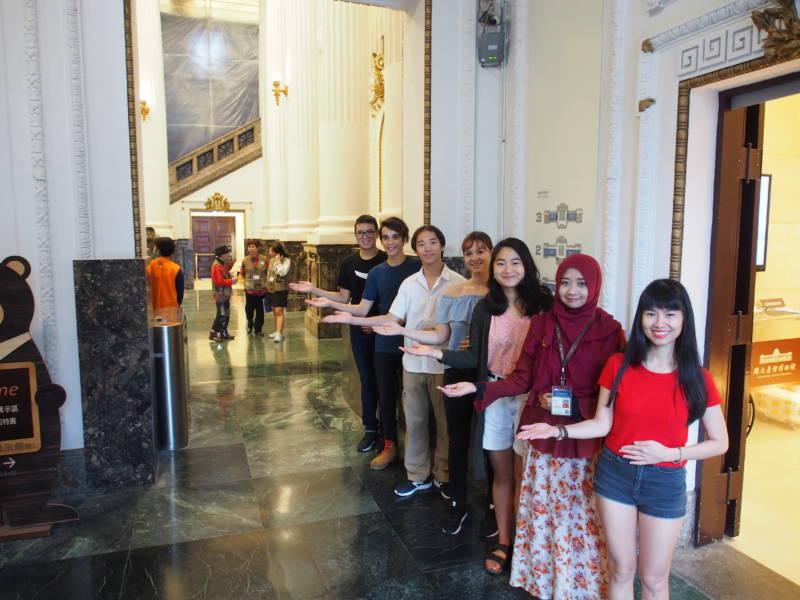
In the past, new immigrants would participate in public service through the National Immigration Agency, social welfare organizations, and NPO caring for new immigrants and migrant workers. Taiwan has always been a multi-cultural society, and having immigrants do public service in museums is a refreshing start, a project worthy of sustainable operation. When the museum decided to work on this task, we outreach all personnel, organization, and party referring to immigrants and invited all new immigrants, including women and children, to join all kinds of courses and activities managed by the promotion-of-education team from the museum. In this process, they are in the habit of visiting the museum and building trust. At present, new immigrants are significant as the social capital of Taiwan society. New immigrants’ service can help them discover their potential and become an excellent reference for immigrants to join public services. Further, it makes the Taiwanese to see the real Southeast Asian world.
References:
- 陳佳利(2015)。邊緣與再現。臺北市:臺大出版中心。
- 隗振瑜(2014)。 國立臺灣博物館與新住民參與經驗-以「臺灣新故鄉–當新住民遇上博物館」活動為例。
- 鄭邦彥(2014)「不只是觀眾」的異質想像:博物館與新住民專題引言。博物館簡訊,67,6-9
- 葉宗顯譯(2013)跨越邊界:當代遷徙的因果。新北市:國家教育研究院。
- 李美賢、楊昊譯(2010)東南亞多元與發展。臺北市:財團法人亞太文化學術交流基金會。
- 陳雪雲(2010)。博物館是世界公民的終身學習場域。博物館學季刊,24(4):5-17
- 張智雅、曾薔霓(2011)。台灣新移民女性配偶社會參與之研究。嘉南學報,37,416-430
- 許惠茹(2009)。新移民教育的學校經營初探:美國跨文化觀點學習與學校連結服務的內外部發展策略。屏東教育大學學報-教育類,33,69-100
- 中華民國博物館學會「博物館簡訊」第67期(2014年3月)。http://www.tmaroc.org.tw/wp-content/uploads/67期簡訊.pdf
- Chang, Wendy(2016年8月12日)一群在台灣各地工廠、家庭或養老院的移工,自主舉辦印尼國慶71周年活動。關鍵評論網。取自:https://asean.thenewslens.com/article/46164

